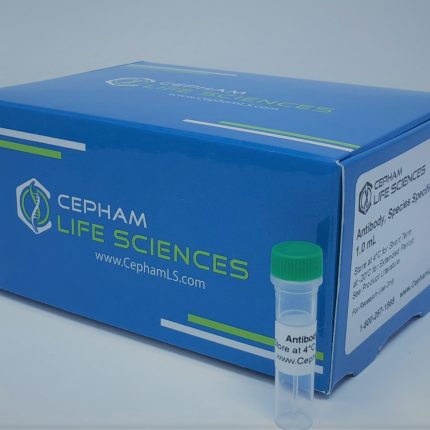Aliases
3-alpha-HSD3, Chlordecone reductase homolog HAKRD, Dihydrodiol dehydrogenase 2, Dihydrodiol dehydrogenase/bile acid-binding protein, Trans-1, 2-dihydrobenzene-1, 2-diol dehydrogenase, Type III 3-alpha-hydroxysteroid dehydrogenase, AKR1C2, DDH2
Antibody Type
Polyclonal Antibody
Species
Human
Uniprot ID
P52895
Immunogen
Recombinant human Aldo-keto reductase family 1 member C2 protein (1-323AA)
Raised In
Rabbit
Species Reactivity
Human
Tested Applications
ELISA;Not yet tested in other applications.
Background / Function
Works in concert with the 5-alpha/5-beta-steroid reductases to convert steroid hormones into the 3-alpha/5-alpha and 3-alpha/5-beta-tetrahydrosteroids. Catalyzes the inactivation of the most potent androgen 5-alpha-dihydrotestosterone (5-alpha-DHT) to 5-alpha-androstane-3-alpha,17-beta-diol (3-alpha-diol). Has a high bile-binding ability.
Isotype
IgG
Conjugate
FITC
Storage Buffer
Preservative: 0.03% Proclin 300
Constituents: 50% Glycerol, 0.01M PBS, PH 7.4
Form
Liquid
Storage
Shipped at 4°C. Upon delivery aliquot and store at -20°C or -80°C. Avoid repeated freeze.
Purity
Caprylic Acid Ammonium Sulfate Precipitation purified
Literature
[1]Mouse 17alpha-hydroxysteroid dehydrogenase (AKR1C21) binds steroids differently from other aldo-keto reductases: identification and characterization of amino acid residues critical for substrate binding. Faucher F., Cantin L., Pereira de Jesus-Tran K., Lemieux M., Luu-The V., Labrie F., Breton R. J. Mol. Biol. 369:525-540(2007). [2]Crystal structures of mouse 17alpha-hydroxysteroid dehydrogenase (apoenzyme and enzyme-NADP(H) binary complex): identification of molecular determinants responsible for the unique 17alpha-reductive activity of this enzyme. Faucher F., Pereira de Jesus-Tran K., Cantin L., Luu-The V., Labrie F., Breton R. J. Mol. Biol. 364:747-763(2006). [3]Comparison of crystal structures of human type 3 3alpha-hydroxysteroid dehydrogenase reveals an ‘induced-fit’ mechanism and a conserved basic motif involved in the binding of androgen. Couture J.F., de Jesus-Tran K.P., Roy A.M., Cantin L., Cote P.L., Legrand P., Luu-The V., Labrie F., Breton R. Protein Sci. 14:1485-1497(2005).







